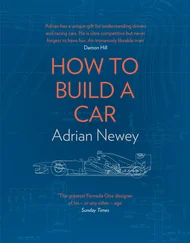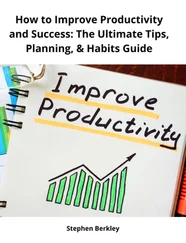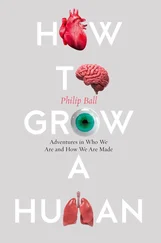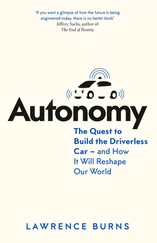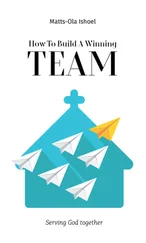Eyal, Nir - Hooked - How to Build Habit-Forming Products
Здесь есть возможность читать онлайн «Eyal, Nir - Hooked - How to Build Habit-Forming Products» весь текст электронной книги совершенно бесплатно (целиком полную версию без сокращений). В некоторых случаях можно слушать аудио, скачать через торрент в формате fb2 и присутствует краткое содержание. Год выпуска: 2014, Издательство: Nir Eyal, Жанр: Старинная литература, на английском языке. Описание произведения, (предисловие) а так же отзывы посетителей доступны на портале библиотеки ЛибКат.
- Название:Hooked: How to Build Habit-Forming Products
- Автор:
- Издательство:Nir Eyal
- Жанр:
- Год:2014
- ISBN:нет данных
- Рейтинг книги:5 / 5. Голосов: 1
-
Избранное:Добавить в избранное
- Отзывы:
-
Ваша оценка:
- 100
- 1
- 2
- 3
- 4
- 5
Hooked: How to Build Habit-Forming Products: краткое содержание, описание и аннотация
Предлагаем к чтению аннотацию, описание, краткое содержание или предисловие (зависит от того, что написал сам автор книги «Hooked: How to Build Habit-Forming Products»). Если вы не нашли необходимую информацию о книге — напишите в комментариях, мы постараемся отыскать её.
Hooked: How to Build Habit-Forming Products — читать онлайн бесплатно полную книгу (весь текст) целиком
Ниже представлен текст книги, разбитый по страницам. Система сохранения места последней прочитанной страницы, позволяет с удобством читать онлайн бесплатно книгу «Hooked: How to Build Habit-Forming Products», без необходимости каждый раз заново искать на чём Вы остановились. Поставьте закладку, и сможете в любой момент перейти на страницу, на которой закончили чтение.
Интервал:
Закладка:
Maltz should know. His firm announced an investment in another pre-revenue app, Snapchat, at an $800 million valuation in July 2013. [cxxvi]Maltz justifies the price by pointing to the per-user valuations of other tech companies such as Facebook, Instagram and Twitter, each of which commanded astronomical investment sums well before turning a profit. Maltz was quick to add, “Of course, this assumes the company can monetize through advertising.”
In the Beginning
Gruenewald is a quick-thinking, fast-talking man. During our conversation, he pulled up statistics in real-time, stopping himself mid-sentence whenever relevant data flashed on his screen. As Gruenewald preaches on about mobile app development best practices, I need to occasionally interrupt him to ask clarifying questions. My words stumble over his enthusiasm as he bears witness to what he’s learned building his app. He spouts user retention figures with the same gusto I’d imagine he might proclaim scripture.
“Unlike other companies, when we started, we were not building a Bible reader for seminary students. YouVersion was designed to be used by everyone, every day,” Gruenewald says, attributing much of the app’s success to a relentless focus on creating habitual Bible readers. The Bible app’s success is broken down into the language of habit formation more commonly seen in psychology textbooks. The “cues,” “behaviors” and “rewards” of communing with the Lord are bullet-pointed and ready for our discussion.
“Bible study guides are nothing new,” Gruenewald says. “People have been using them with pen and paper long before we came along.” But I soon find out, the Bible app is much more than a mobile study guide.
In fact, the first version of YouVersion was not mobile at all. “We originally started as a desktop website, but that really didn’t engage people in the Bible. It wasn’t until we tried a mobile version that we noticed a difference in people, including ourselves, turning to the Bible more because it was on a device they always had with them.”
This is not surprising. The Fogg Behavior Model (chapter three) notes that for an action to occur, users must receive a trigger and have sufficient motivation and ability to complete it. If any of these elements are missing or inadequate at the moment the trigger arises, the action will not occur.
The omnipresence of the Bible app makes it far more accessible than its website predecessor, giving users the ability to open the mobile app when triggered by the pastor’s instructions or when feeling inspired at other moments throughout their day. Its users take it everywhere, reading the scripture in even the most unsanctified places. The company revealed that 18 percent of readers report using the Bible app in the bathroom. [cxxvii]
How to Form a God Habit
Gruenewald acknowledges his Bible app enjoyed the good fortune of being among the first of its kind at the genesis of the App Store in 2008. To take advantage of the newly established App Store, Gruenewald quickly converted his website into a mobile app optimized for reading. The app caught the rising tide, but soon a wave of competition followed. If his app was to reign supreme, Gruenewald needed to get users hooked quickly.
That’s when Gruenewald says he implemented a plan — actually, many plans. A signature of the Bible app is its selection of over 400 reading plans — a devotional iTunes of sorts, catering to an audience with diverse tastes, troubles, and tongues. Given my personal interest and research into habit-forming technology, I decided to start a Bible reading plan of my own. A plan titled “Addictions” seemed appropriate.
For those who have yet to form a routine around Biblical study, reading plans provide structure and guidance. “Certain sections of the Bible can be difficult for people to get through,” Gruenewald admits. “By offering reading plans with different small sections of the Bible each day, it helps keep [readers] from giving up.”
The app chunks out and sequences the text by separating it into bite-sized pieces. By parsing readings into digestible communion wafer-sized portions, the app focuses the reader’s brain on the small task at hand while avoiding the intimidation of reading the entire book.
Holy Triggers
Five years of testing and tinkering have helped Gruenewald’s team discover what works best. Today, the Bible app’s reading plans are tuned to immaculate perfection and Gruenewald has learned that frequency of use is paramount. “We’ve always focused on daily reading. Our entire structure for plans focuses on daily engagement.”
To get users to open the app every day, Gruenewald makes sure he sends effective cues — like the notification sent to the sinner in the strip club. But Gruenewald admits he stumbled upon the power of good triggers. “At first we were very worried about sending people notifications. We didn’t want to bother them too much.”
To test how much of a cross users were willing to bear, Gruenewald decided to run an experiment. “For Christmas, we sent people a message from the app. Just a ‘Merry Christmas’ in various languages.” The team was prepared to hear from disgruntled users annoyed by the message. “We were afraid people would uninstall the app,” Gruenewald says. “But just the opposite happened. People took pictures of the notification on their phones and started sharing them on Instagram, Twitter and Facebook. They felt God was reaching out to them.” Today, Gruenewald says, triggers play an important role in every reading plan.
On my own plan, I receive a daily notification — an owned external trigger — on my phone. It simply says, “Don’t forget to read your Addictions reading plan.” Ironically, the addiction I’m trying to cure is my dependency on digital gadgetry, but what the hell, I’ll fall off the wagon just this once.
In case I somehow avoid the first message, a red badge over a tiny Holy Bible icon on my phone cues me again. If I forget to start the first day of a plan, I’ll receive a message suggesting that perhaps I should try a different, less-challenging plan. I also have the option of receiving verse through email. And if I slip up and miss a few days, another email reminds me to get back on track.
The Bible app also comes with a virtual congregation of sorts. Members of the site tend to send encouraging words to one another, delivering even more triggers. According to the company’s publicist, “Community emails can serve as a nudge to open the app.” These relationship-based external triggers are everywhere in the Bible app and are one of the keys to keeping users engaged.
Glory Be in the Data
Gruenewald’s team sifts through behavioral data collected from millions of readers to better understand what users want from the app. “We just have so much data flowing through our system,” Gruenewald says. The data reveals important insights on what drives user retention. High on the list of learnings is the importance of “ease of use,” which came up throughout our conversation.
In line with the work of psychologists from early Gestalt psychologist Kurt Lewin to modern-day researchers, the app uses the principle that by making an intended action easier to do, people will do it more often.
The Bible app is designed to make absorbing the Word as frictionless as possible. For example, to make the Bible app habit easier to adopt, users who prefer listening over reading can simply tap a small icon to play an audio track read with the dramatic bravado of Charlton Heston himself.
Gruenewald says his data also revealed that changing the order of the Bible by placing the more interesting sections up-front and saving the boring bits for later increased completion rates. Furthermore, daily reading plans are kept to a simple inspirational thought and a few short verses for newcomers. The idea is to get neophytes into the ritual for a few minutes each day until the routine becomes a facet of their everyday lives.
Читать дальшеИнтервал:
Закладка:
Похожие книги на «Hooked: How to Build Habit-Forming Products»
Представляем Вашему вниманию похожие книги на «Hooked: How to Build Habit-Forming Products» списком для выбора. Мы отобрали схожую по названию и смыслу литературу в надежде предоставить читателям больше вариантов отыскать новые, интересные, ещё непрочитанные произведения.
Обсуждение, отзывы о книге «Hooked: How to Build Habit-Forming Products» и просто собственные мнения читателей. Оставьте ваши комментарии, напишите, что Вы думаете о произведении, его смысле или главных героях. Укажите что конкретно понравилось, а что нет, и почему Вы так считаете.


